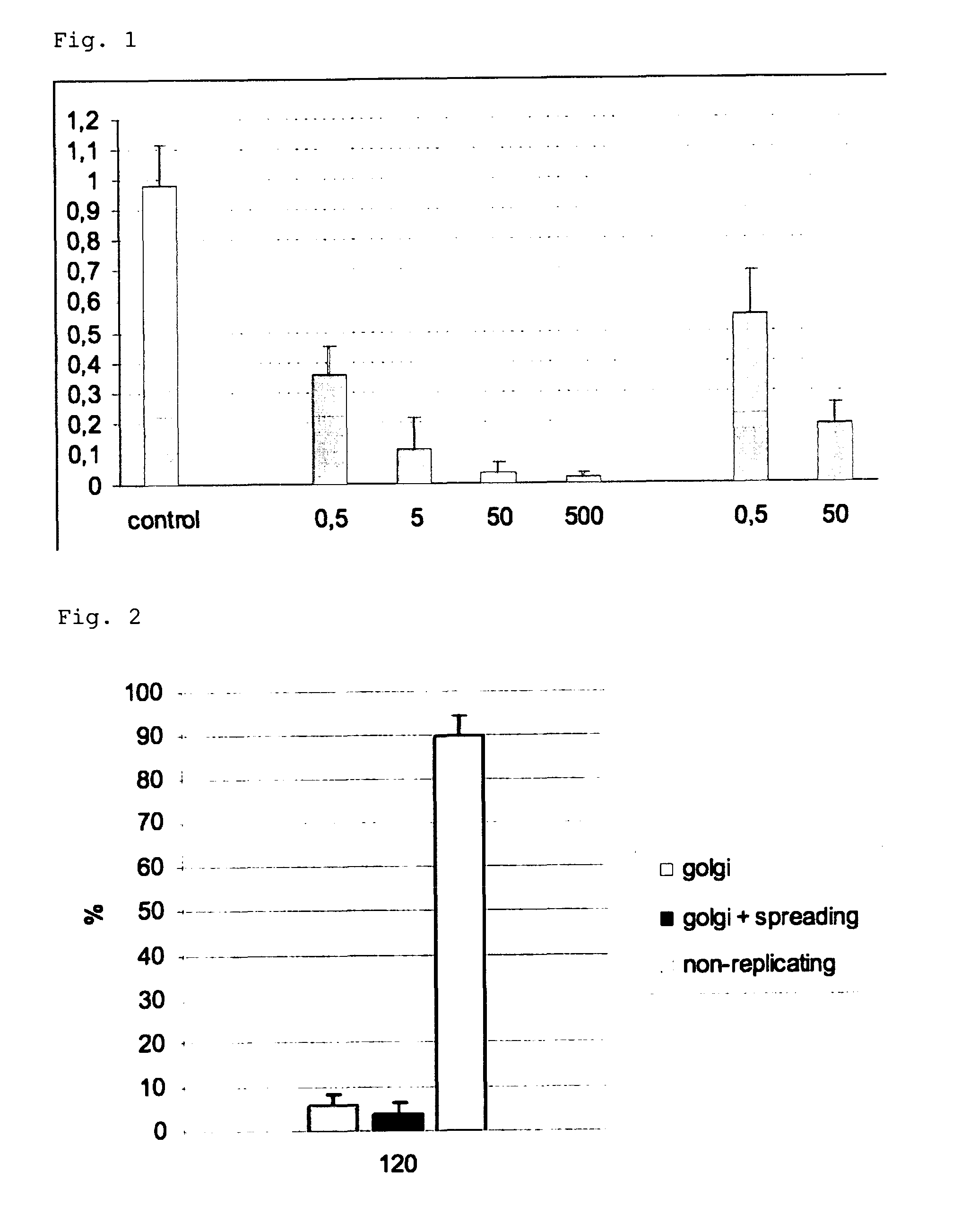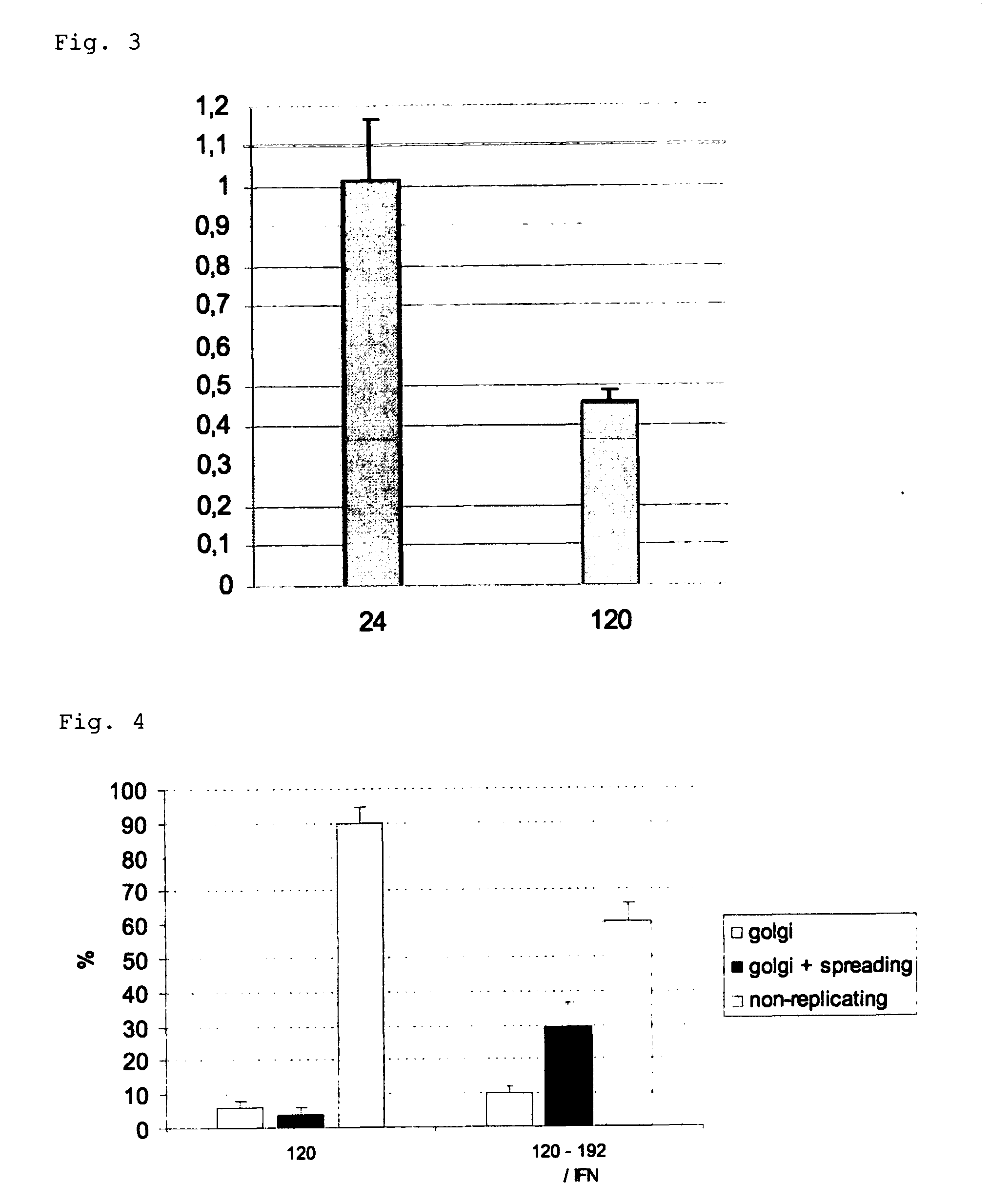Viral latency model
a latency model and virus technology, applied in the field ofvirology, can solve the problems of difficult interpretation of reactivation data, many of the mechanisms resulting in establishment, maintenance and reactivation from latency, and difficulty in understanding the mechanisms. to achieve the effect of promoting viral latency in the cell
- Summary
- Abstract
- Description
- Claims
- Application Information
AI Technical Summary
Benefits of technology
Problems solved by technology
Method used
Image
Examples
examples
[0124]The following examples illustrate the invention. Other embodiments will occur to the person skilled in the art in light of these examples.
Materials & Methods
Cultivation, Virus Inoculation, and Analysis of Primary TG Neuronal Cultures in a Two-Chamber Model
[0125]Porcine trigeminal ganglion (TG) neurons were obtained as described before (Geenen et al., 2005) and seeded in an in vitro model, based on the ‘Campenot’ system, that allows to simulate the in vivo route of neuronal infection (De Regge et al, 2006ab). In brief, porcine trigeminal ganglia were excised from 4 to 6 week old piglets and dissociated by enzymatic digestion with 0.2% collagenase A (Roche, Mannheim, Germany). The harvested cells were resuspended in culture medium (MEM supplemented with 10% fetal bovine serum, 100 U / ml penicillin, 0.1 mg / ml streptomycin, 0.1 mg / ml kanamycin and 30 ng / ml nerve growth factor (Sigma Chemical Compagny, St. Louis, Mo., USA)) and seeded in the inner chamber of an in vitro two-chamber...
PUM
| Property | Measurement | Unit |
|---|---|---|
| Fraction | aaaaa | aaaaa |
Abstract
Description
Claims
Application Information
 Login to View More
Login to View More - R&D
- Intellectual Property
- Life Sciences
- Materials
- Tech Scout
- Unparalleled Data Quality
- Higher Quality Content
- 60% Fewer Hallucinations
Browse by: Latest US Patents, China's latest patents, Technical Efficacy Thesaurus, Application Domain, Technology Topic, Popular Technical Reports.
© 2025 PatSnap. All rights reserved.Legal|Privacy policy|Modern Slavery Act Transparency Statement|Sitemap|About US| Contact US: help@patsnap.com



